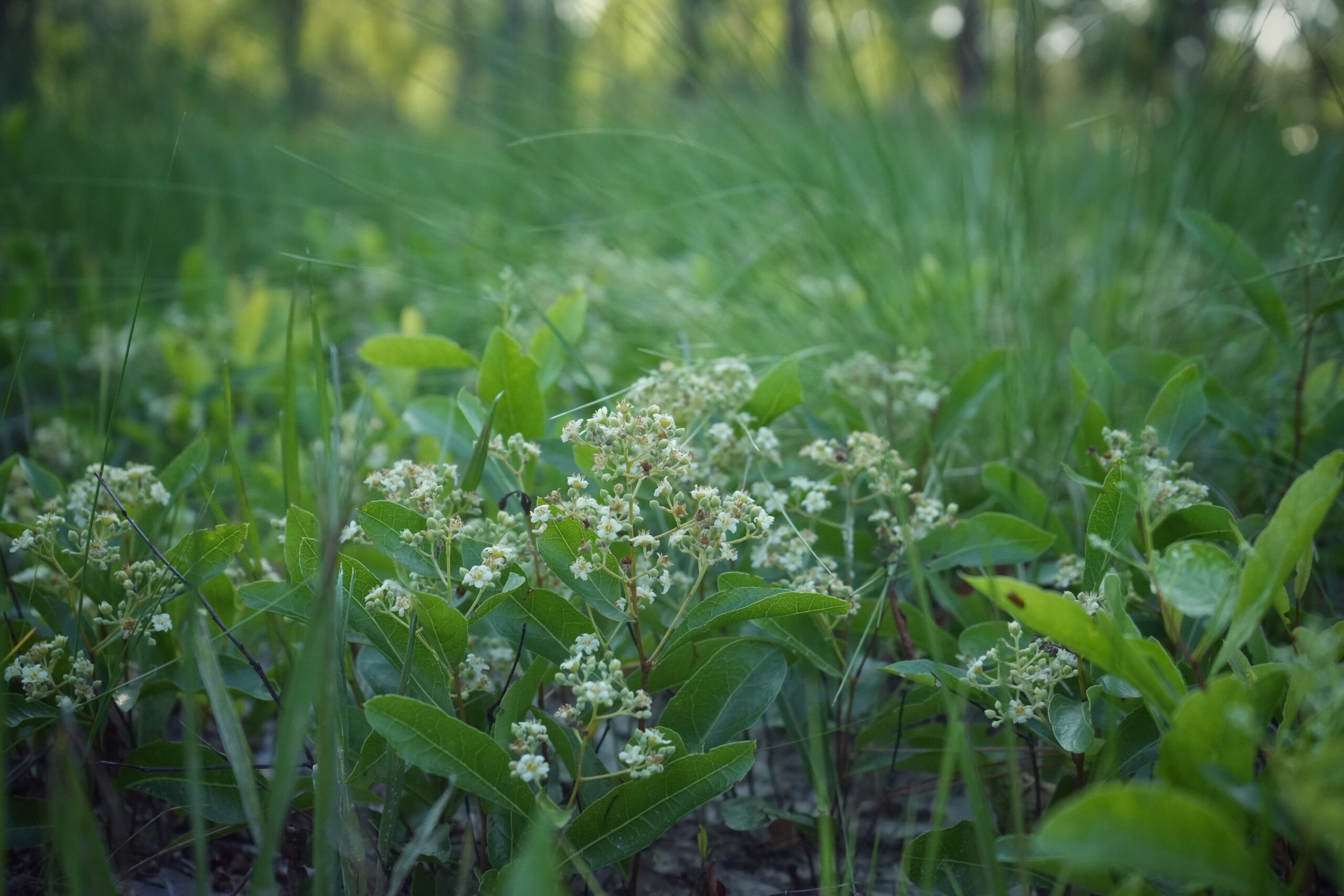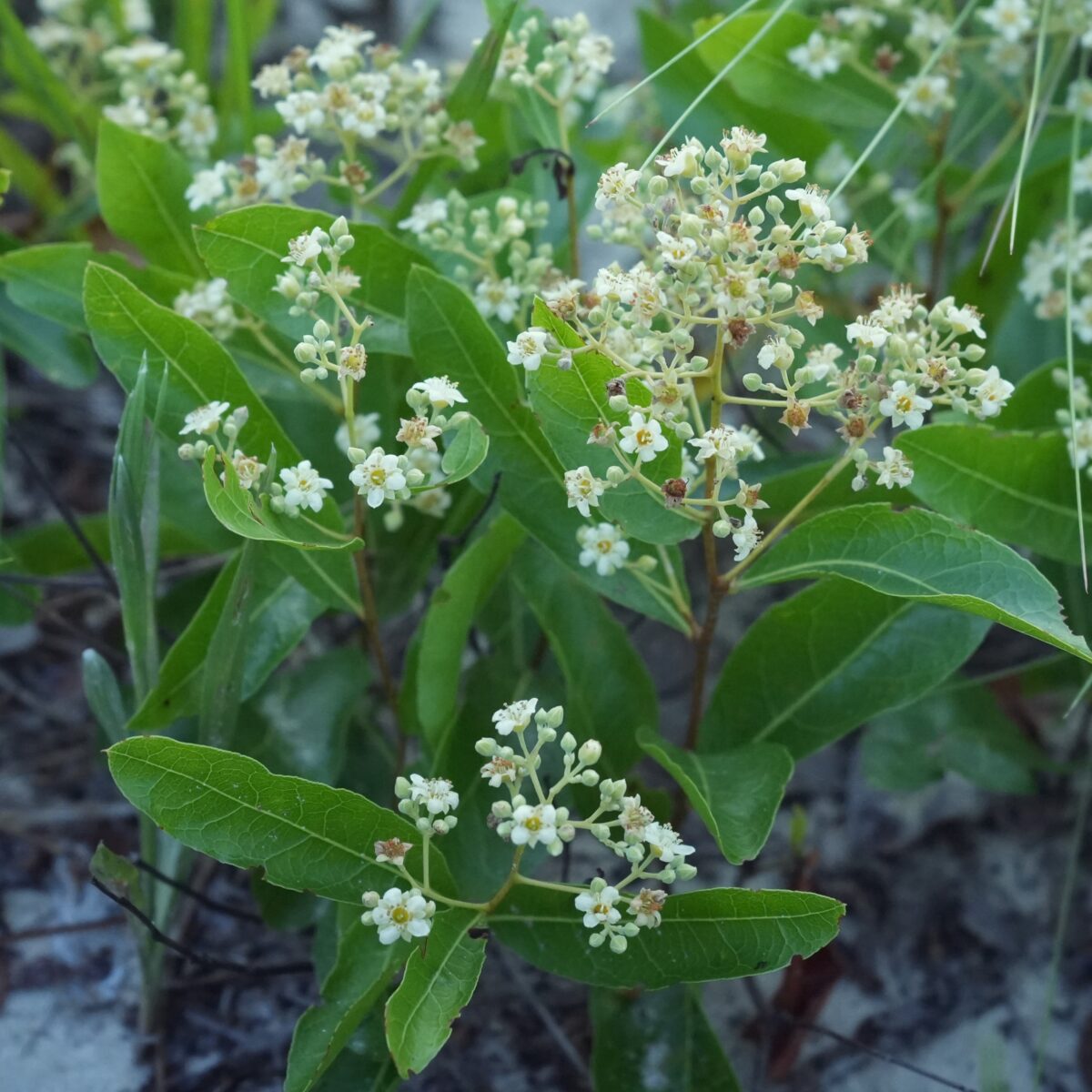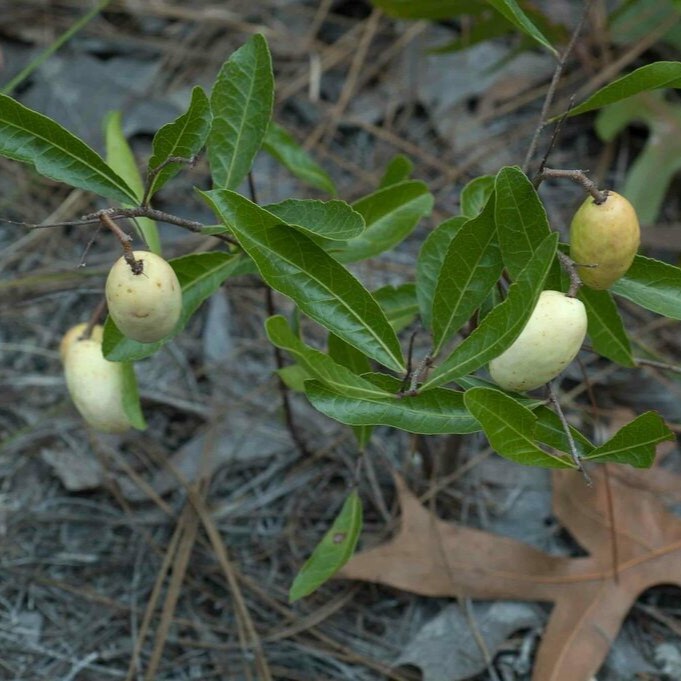Gopher apple
Pictured above: Gopher apple (Geobalanus oblongifolius) by Emily Bell. Click on terms for botanical definitions. View post as a PDF.
Gopher apple (Geobalanus oblongifolius) is a hardy, low-growing, woody groundcover that occurs naturally in sandhills, pine and scrubby flatwoods, scrub, coastal dunes and pine rocklands. It typically blooms spring through summer but may bloom year-round, attracting a plethora of pollinators. Its fruits appear in late summer. They are edible to humans (although nearly tasteless) and other animals but it is a preferred food of gopher tortoises. The plant is often confused with Runner oak (Quercus pumila), which has a similar growth habit and is found in similar habitats.
Gopher apple’s flowers are small, creamy white and born in erect, terminal cymes. Leaves are leathery, stiff and oblong with fine but obvious venation. They can grow up to 4 inches long and are alternately arranged. Fruits are white drupes with a rosy blush, ovoid to ellipsoid in shape, and about 1 inch long or longer.
This species was previously assigned the botanical name Licania michauxii and may still be referred to as such in some online resources. However, research published in 2016 determined that it was better placed in the genus Geobalanus.
Family: Chrysobalanaceae (Cocoplum family)
Native range: Nearly throughout Florida
To see where natural populations of gopher apple have been vouchered, visit www.florida.plantatlas.usf.edu.
Lifespan: Perennial
Soil: Dry, well-drained sandy soils
Exposure: Full sun
Growth habit: Up to 1’ tall
Propagation: Seeds
Florida region of landscape suitability: North, Central, South
Garden tips: Gopher apple will spread and form colonies by way of underground rhizomes. It works well as a groundcover and can help stabilize dry, sandy soils. It is fire adapted and salt and drought tolerant.
Gopher apple plants are often available at nurseries that specialize in native plants. Visit www.PlantRealFlorida.org to find a native nursery on your area.
Learn more about Gopher apple from the Florida Native Plant Society and the Institute for Regional Conservation.



